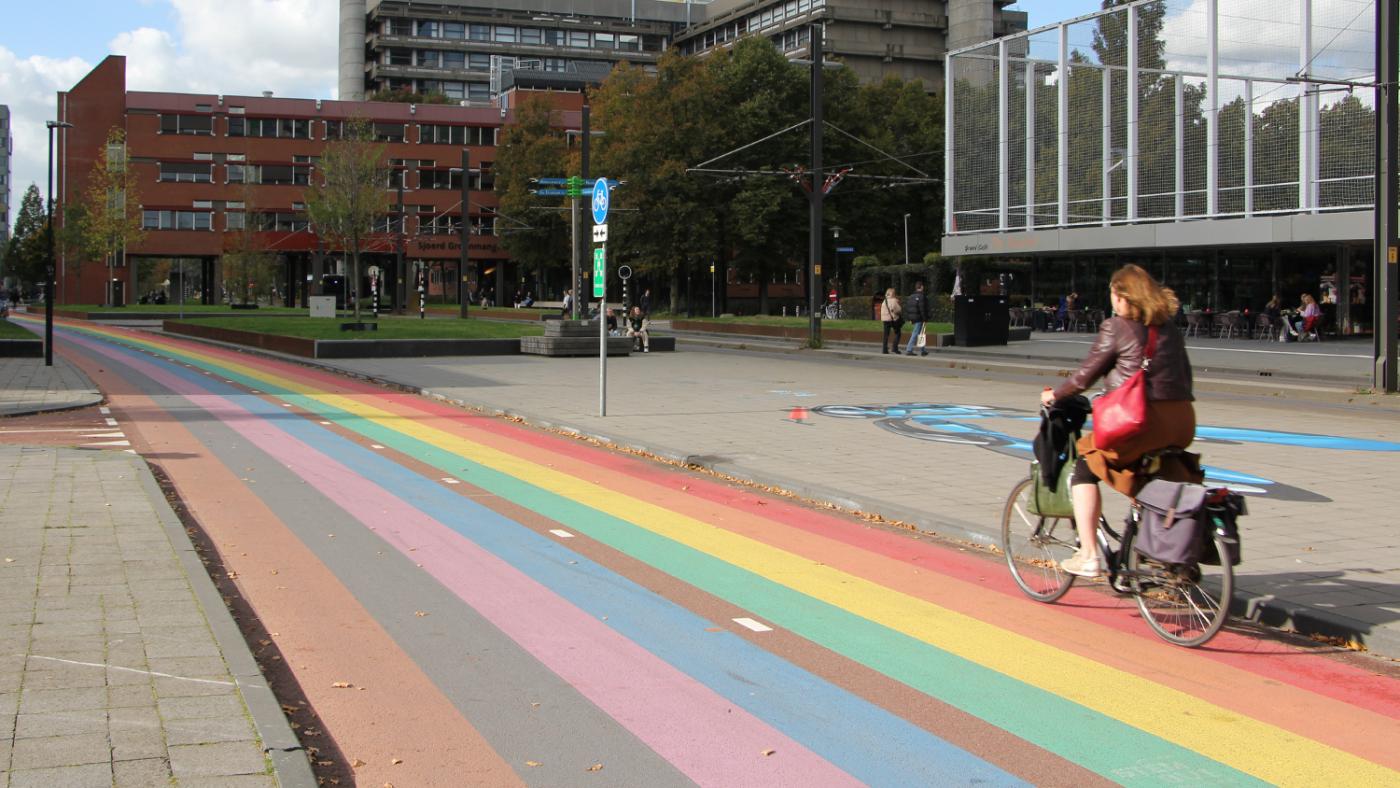Coming Out Day
Rainbow bike path is a nice symbolic gesture but UU must be more inclusive

Exactly one year ago, a 570-metre-long rainbow-coloured bicycle path was being officially inaugurated in the Utrecht Science Park. It is the longest in the world. This Coming Out Day, the results of a survey about the value of the initiative are finally being unveiled.
“The goal was to investigate the effect the bike path had; whether the goals of the Equality, Diversity & Inclusion Network have been reached,” explains student Milou van der Burg, who conducted the survey alongside the PhD candidate Miriam Wickham. “For example, they wanted to raise awareness of the LGBTQI+ community and the problems they face.”
Boosting their image
In total, 183 students and 323 staff members participated in the survey, most of them from UU. The majority welcomes the bike path as a symbol of the inclusion of the LGBTQI+ community at UU, HU and UMC Utrecht. They also think it’s a good thing that, through this symbol, the three institutions are displaying their commitment to becoming more inclusive.
Although LGBTQI+ respondents are a little bit less satisfied with the rainbow bike path, they too are positive about its symbolic value and the fact that the institutions are promising to work on diversity and inclusion. However, half of the respondents think that the three universities are using the bike path as a means to improve their image. No less than 65 percent of the LGBTQI+ respondents said so.
Invisible
Milou van der Brug and Miriam Wickham, the two researchers behind the report, presented the results on Coming Out Day, the international day to call for acceptance and respect for the LGBTQI+ community. Both UU and HU participate in the event. UU, for example, raised the rainbow flag in front of the Administration Building this Tuesday.
But the Equality, Diversity and Inclusion (EDI) Office has quite some work to do. The research reveals that the department is practically invisible: most students and employees do not even know it exists, let alone what it does.
Van den Brug suspects that students aren’t talking much about inclusivity in higher education. “They indicated that they are not aware of EDI’s plans, which means they are probably not talking about that. Their reaction is more like ‘Oh, okay, there’s a rainbow here now’. And then they move on with their lives.”
A gender-inclusive university
The two researchers also give the institutions a piece of advice. For starters, they should take action to improve the inclusion of LGBTQI+ students as this group doubts their sincerity when they promise to promote inclusion. This feeling is particularly recurrent among gender minorities (those whose gender identity differs from the majority).
In addition, the students consulted in the research report that gender inclusiveness should be improved in all three institutions. They would like to see more gender-neutral toilets, for example. Another suggestion is to make sex and gender registration more inclusive.
Less happy
“Gender minorities react in a much less positive manner when asked about how inclusive the educational institutions are,” Van der Brug says. “In general, they are less happy about the current state of affairs. This is a group we really should be paying more attention to.”
Finally, the survey shows that gender minorities are consistently less likely to feel like they're part of the institution. They tend to feel more alienated compared to sexual minorities (those whose sexual orientation differs from the majority). Students who belong to both groups are the ones less connected with their educational institution.